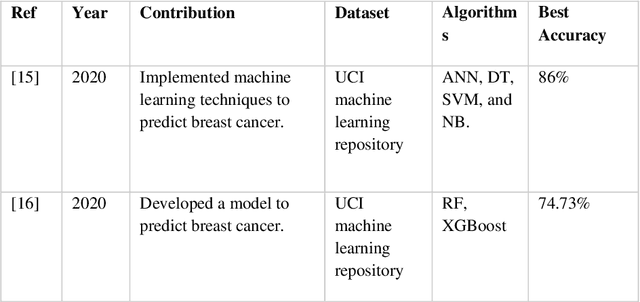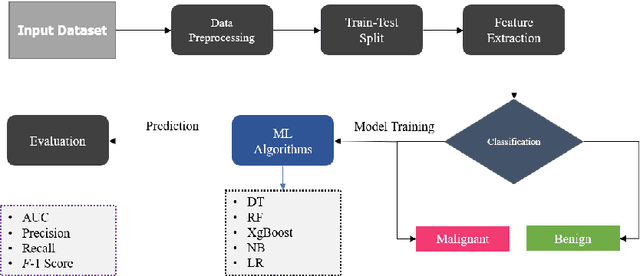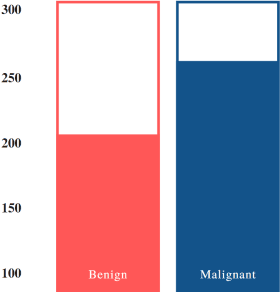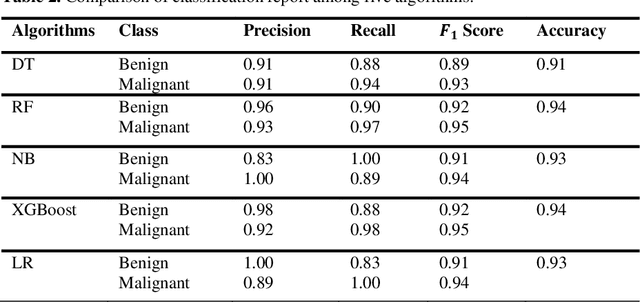Nazmul Islam Khan
Analysis of Arrhythmia Classification on ECG Dataset
Jan 10, 2023Abstract:The heart is one of the most vital organs in the human body. It supplies blood and nutrients in other parts of the body. Therefore, maintaining a healthy heart is essential. As a heart disorder, arrhythmia is a condition in which the heart's pumping mechanism becomes aberrant. The Electrocardiogram is used to analyze the arrhythmia problem from the ECG signals because of its fewer difficulties and cheapness. The heart peaks shown in the ECG graph are used to detect heart diseases, and the R peak is used to analyze arrhythmia disease. Arrhythmia is grouped into two groups - Tachycardia and Bradycardia for detection. In this paper, we discussed many different techniques such as Deep CNNs, LSTM, SVM, NN classifier, Wavelet, TQWT, etc., that have been used for detecting arrhythmia using various datasets throughout the previous decade. This work shows the analysis of some arrhythmia classification on the ECG dataset. Here, Data preprocessing, feature extraction, classification processes were applied on most research work and achieved better performance for classifying ECG signals to detect arrhythmia. Automatic arrhythmia detection can help cardiologists make the right decisions immediately to save human life. In addition, this research presents various previous research limitations with some challenges in detecting arrhythmia that will help in future research.
* 6 pages, 5 figures. This paper has been published to 2022 proceedings of IEEE 7th International conference for Convergence in Technology (I2CT), 07-09 April 2022, Mumbai, India
Machine Learning Approaches to Predict Breast Cancer: Bangladesh Perspective
Jun 30, 2022



Abstract:Nowadays, Breast cancer has risen to become one of the most prominent causes of death in recent years. Among all malignancies, this is the most frequent and the major cause of death for women globally. Manually diagnosing this disease requires a good amount of time and expertise. Breast cancer detection is time-consuming, and the spread of the disease can be reduced by developing machine-based breast cancer predictions. In Machine learning, the system can learn from prior instances and find hard-to-detect patterns from noisy or complicated data sets using various statistical, probabilistic, and optimization approaches. This work compares several machine learning algorithm's classification accuracy, precision, sensitivity, and specificity on a newly collected dataset. In this work Decision tree, Random Forest, Logistic Regression, Naive Bayes, and XGBoost, these five machine learning approaches have been implemented to get the best performance on our dataset. This study focuses on finding the best algorithm that can forecast breast cancer with maximum accuracy in terms of its classes. This work evaluated the quality of each algorithm's data classification in terms of efficiency and effectiveness. And also compared with other published work on this domain. After implementing the model, this study achieved the best model accuracy, 94% on Random Forest and XGBoost.
 Add to Chrome
Add to Chrome Add to Firefox
Add to Firefox Add to Edge
Add to Edge